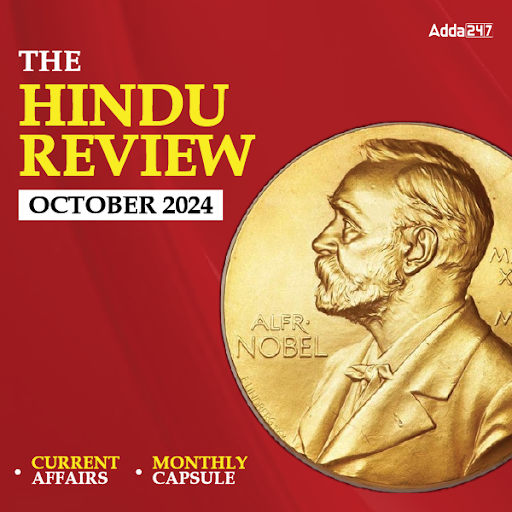
Directions (1-5): Study the following information carefully and answer the given questions:
A, B, C, D, E, F, G and H are eight students sitting around a circular table. Four of them are facing towards the centre and four of them are facing towards opposite the centre. All of them like a different colours, viz. Red, Blue, Yellow, White, Black, Green, Brown and Violet, but not necessarily in the same order.
E faces towards the centre and likes Red. Both the immediate neighbours of E face away from the centre and like Yellow or White. D faces away from the centre. Both the immediate neighbours of D do not face away from the centre. E sits third to the right of F, who likes Black and faces away from the centre. C sits third to the left of F.
The one who likes Yellow sits opposits F. The one who likes Blue is not the immediate neighbour of F and faces away from the centre. A sits second to the left of C and does not like Brown or Violet. The one who likes Brown sits between H and F. B faces away from the centre and does not like Blue.
Q1. Who among the following sits third to the right of G?
(a) A
(b) B
(c) C
(d) D
(e) F
Q2. Which of the following combinations is true?
(a) A – Black
(b) B – White
(c) G – Brown
(d) F – YELLOW
(e) None of these
Q3. If all the people are made to sit in alphabetical order, in clockwise direction, starting from A, the position of who amongst the following remains the same? (excluding A)
(a) D
(b) E
(c) G
(d) H
(e) None of these
Q4. Who among the following reads Green?
(a) H
(b) A
(c) C
(d) D
(e) None of these
Q5. Which of the following statements is true about H?
(a) He sits second to the left of F.
(b) He sits third to the left of B.
(c) He likes either Blue or Yellow.
(d) G and F are his immediate neighbours.
(e) His neighbours read Red and Brown.
Directions (6-10): Study the following information carefully and answer the given questions.
P, Q, R, S, T, U and V are seven shopkeepers of different shops, viz Grocery, Cosmetics, Clothes, Footwear, Gift items, Watches and Mobile phones. They go to supermarkets, viz. Big Bazaar, Max, Vishal Mega and V-Mart only on Sunday but not necessarily in the same order. At least one shopkeeper goes to one supermarket, but no supermarket is visited by more than two shopkeepers.
• U, who is a shopkeeper of Clothes, goes alone to Vishal Mega.
• The one who is a shopkeeper of Footwear does not go to Big Bazaar. Also, he never goes either with T or with V.
• S goes to V-Mart with the person who is the shopkeeper of Mobile phones.
• R goes to Max. V is not a shopkeeper of Mobile phones.
• The one who is the shopkeeper of Footwear goes to the market with the person who is the shopkeeper of Grocery.
• The one who is the shopkeeper of Gift items goes to V-Mart.
• P is a shopkeeper of neither Cosmetics nor Mobile phones.
• The one who is the shopkeeper of Watches goes to Big Bazaar neither with T nor with S.
• The person who is the shopkeeper of Cosmetics goes to the supermarket with P.
Q6. P goes which of the following supermarkets?
(a) V-Mart
(b) Max
(c) Big Bazaar
(d) Vishal Mega-Mart
(e) None of these
Q7. Which of the following statements is/are not true?
I. S is a shopkeeper of Mobile phones and goes to V-Mart.
II. R is a shopkeeper of Footwear and goes to Big Bazaar.
(a) Both I and II
(b) Neither I nor II
(c) Either I or II
(d) Only I
(e) Only II
Q8. Who among the following is shopkeeper of Gift items?
(a) Q
(b) S
(c) U
(d) P
(e) None of these
Q9. Which of the following statements is definitely incorrect?
(a) R is a shopkeeper of Footwear.
(b) T is a shopkeeper of Mobile phones.
(c) V is shopkeeper of Grocery.
(d) All are incorrect
(e) None of these
Q10. Big Bazaar is visited by which of the following person(s)?
(a) V and T
(b) Only S
(c) P and Q
(d) Only U
(e) None of these
Directions (11-15): In each of the questions below are given three statements followed by three conclusions numbered I, II & III. You have to take the given statements to be true even if they seem to be at variance with commonly known facts. Read all the conclusions and then decide which of the given conclusions logically follows from the given statements disregarding commonly known facts.
Q11. Statements:
All pens are rocks.
Some rocks are chalks.
All chalks are hammers.
Conclusions:
I. Some pens are hammers.
II. Some hammers are rocks.
III. No pens is hammers.
(a) Only I follows.
(b) Only II follows.
(c) Only III follows.
(d) Only either I or III and II follow
(e) None of these
Q12. Statements:
Some boys are posts.
Some posts are doors.
Some doors are chairs.
Conclusions:
I. Some boys are doors.
II. Some posts are chairs.
III. Some boys are chairs.
(a) None follows
(b) Only I follows.
(c) Only II follows
(d) Only III follows
(e) Only I and II follow
Q13. Statements:
Some pockets are buffers.
All buffers are toys.
All toys are drums.
Conclusions:
I. Some drums are pockets.
II. All toys are buffers.
III. Some drums are buffers.
(a) Only I and II follow
(b) Only I and III follow
(c) Only II and III follow
(d) All follow
(e) None of these
Q14. Statements:
All pages are bags.
All colours are bags.
All norms are bags.
Conclusions:
I. Some norms are pages.
II. Some colours are norms.
III. No norms is pages.
(a) Only I follows
(b) Only III follows
(c) Only either I or III follows
(d) Only either I or III and II follow
(e) None of these
Q15. Statements:
Some bikes are trains.
Some trains are boats.
No boat is jeeps.
Conclusions:
I. Some jeeps are bikes.
II. Some boats are bikes.
III. Some jeeps are trains.
(a) None follows
(b) Only I follows
(c) Only II follows
(d) Only III follows
(e) Only II and III follow





 General Awareness Quiz for Bank Mains Ex...
General Awareness Quiz for Bank Mains Ex...
 English Language Quiz For Bank Foundatio...
English Language Quiz For Bank Foundatio...
 Reasoning Quiz For Bank Foundation 2024 ...
Reasoning Quiz For Bank Foundation 2024 ...




